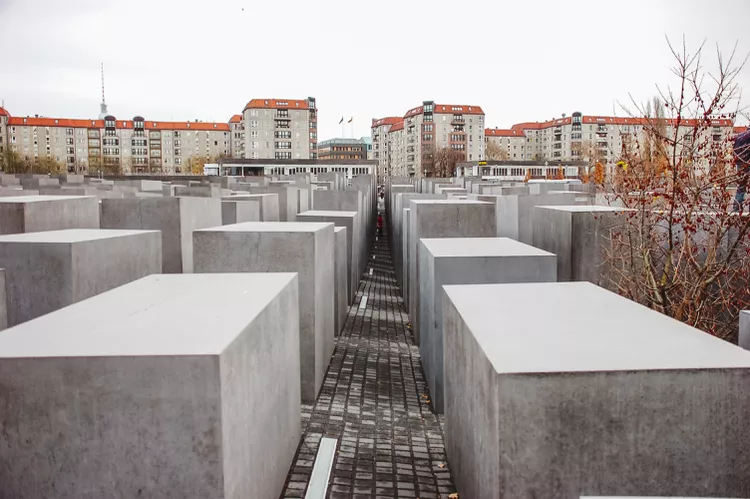Exploring the Impact of World War II in Europe
Whether you’re a history buff or simply looking to deepen your understanding during your travels, Europe provides a significant array of World War II (WWII) battlefield sites, museums, and tours that reflect the complexities and human experiences of this historical period.
Here are various ways to remember the war, pay tribute to its victims, and understand its historical impact.
Museums and Memorials
- Amsterdam—The Anne Frank House: Amsterdam is the location of the house where Anne Frank wrote her diary while hiding from Nazi forces. Visitors can explore this biographical museum dedicated to her legacy.
- Berlin—House of Wannsee Conference: The Wannsee Conference was a critical meeting held on January 20, 1942, where the Nazi regime discussed the “Final Solution” for the extermination of European Jews. Tour the villa in Wannsee, the site of this pivotal event.
- Berlin—The Holocaust Memorial: The Holocaust Memorial, also known as the Memorial to the Murdered Jews of Europe, features a field of concrete slabs designed to evoke a sense of confusion and mourning. The site also includes a list memorializing approximately three million Jewish victims of the Holocaust.
Resistance Museums
While Americans significantly played their part, many other nations had robust resistance movements during WWII. Explore the following museums to gain insight into these efforts:
- Copenhagen—The Museum of Danish Resistance 1940 to 1945: Although closed due to a fire in 2013, this museum aims to showcase artifacts utilized by Danish resistance fighters. The new museum is slated to reopen in Spring 2020.
- Amsterdam—The National War and Resistance Museum: Located in a former Jewish social club, this museum presents an in-depth exploration of Dutch resistance activities, including protests and strikes. Combine your visit here with a tour of the Anne Frank House.
- Paris—Mémorial des Martyrs de la Déportation: This memorial honors the 200,000 individuals deported from Vichy, France, to Nazi concentration camps, situated on the site of a former morgue.
- Champigny-sur-Marne, France—Musée de la Résistance Nationale: France’s Museum of National Resistance features documents, artifacts, and personal testimonies that narrate the French resistance story.
D-Day Battlegrounds
You also have the opportunity to visit notable battlegrounds in the Normandy region of France. These sites are deeply significant to understanding the D-Day invasion and its pivotal role in WWII.
The Origins of the Nazi Power
Understanding the events leading up to WWII is crucial for a comprehensive perspective. One such pivotal moment was the burning of the Reichstag, the German Parliament.
This event transpired during a significant economic crisis, when a foreign dissident instigated attacks on vital structures. After the Reichstag building caught fire, Marius van der Lubbe, a Dutch national, was arrested for the act. Despite his claims of not being a communist, Hermann Goering branded him as such, which set the stage for heightened paranoia and violence against perceived enemies.
Hitler quickly leveraged this situation, announcing a declaration of war on terrorism, which culminated in the establishment of detention centers to secure suspected terrorists. Consequently, legislation swiftly passed that curtailed constitutional rights, allowing arrests without charges and warrantless searches focused on alleged terrorism.
The Reichstag remains open for public visitation today, where a striking glass dome added to the building has become a prominent symbol of modern Berlin.
Exploring the origins of National Socialism can also be complemented by a visit to Hitler’s Munich, enhancing your understanding of this dark chapter in history.





